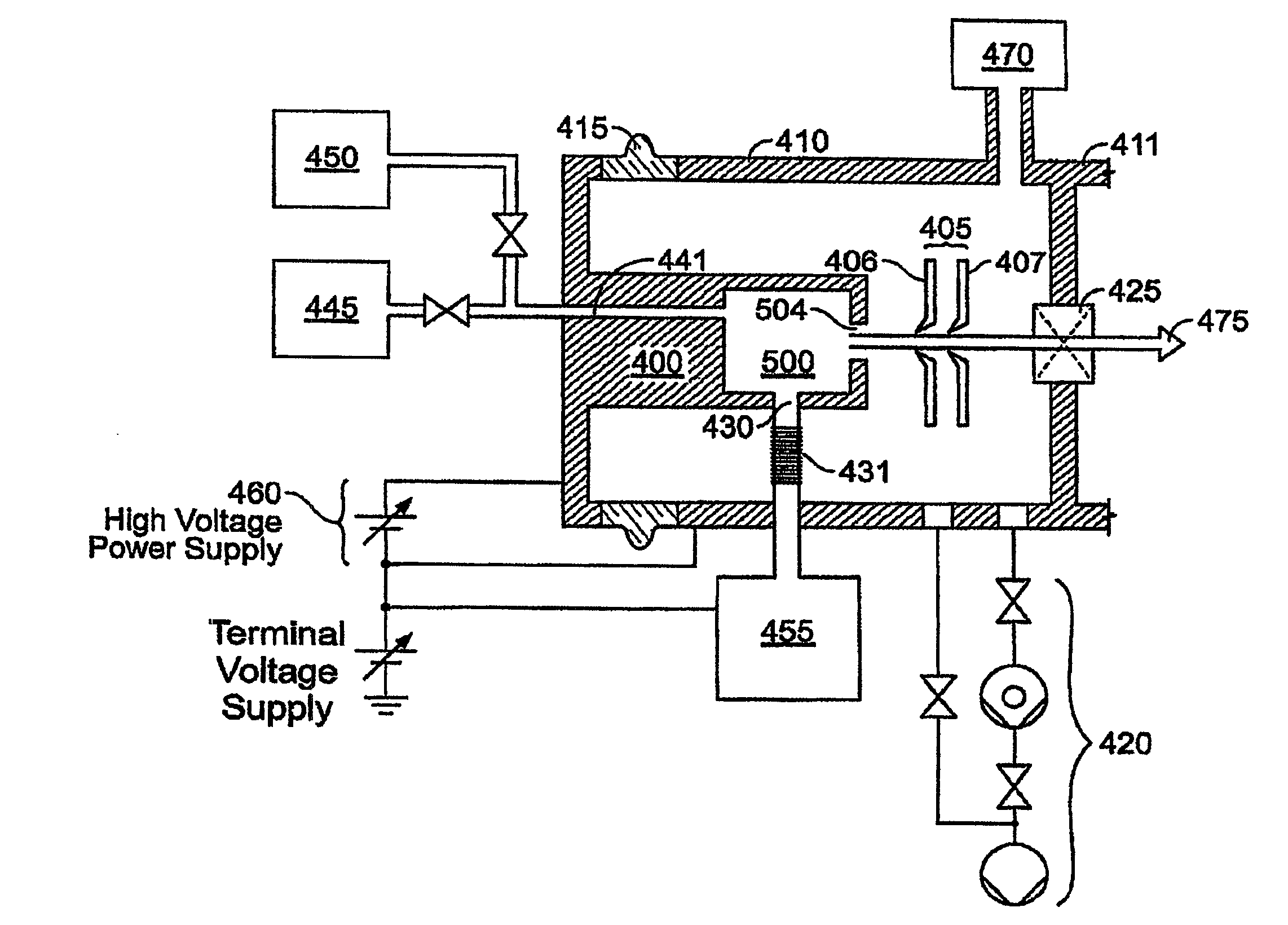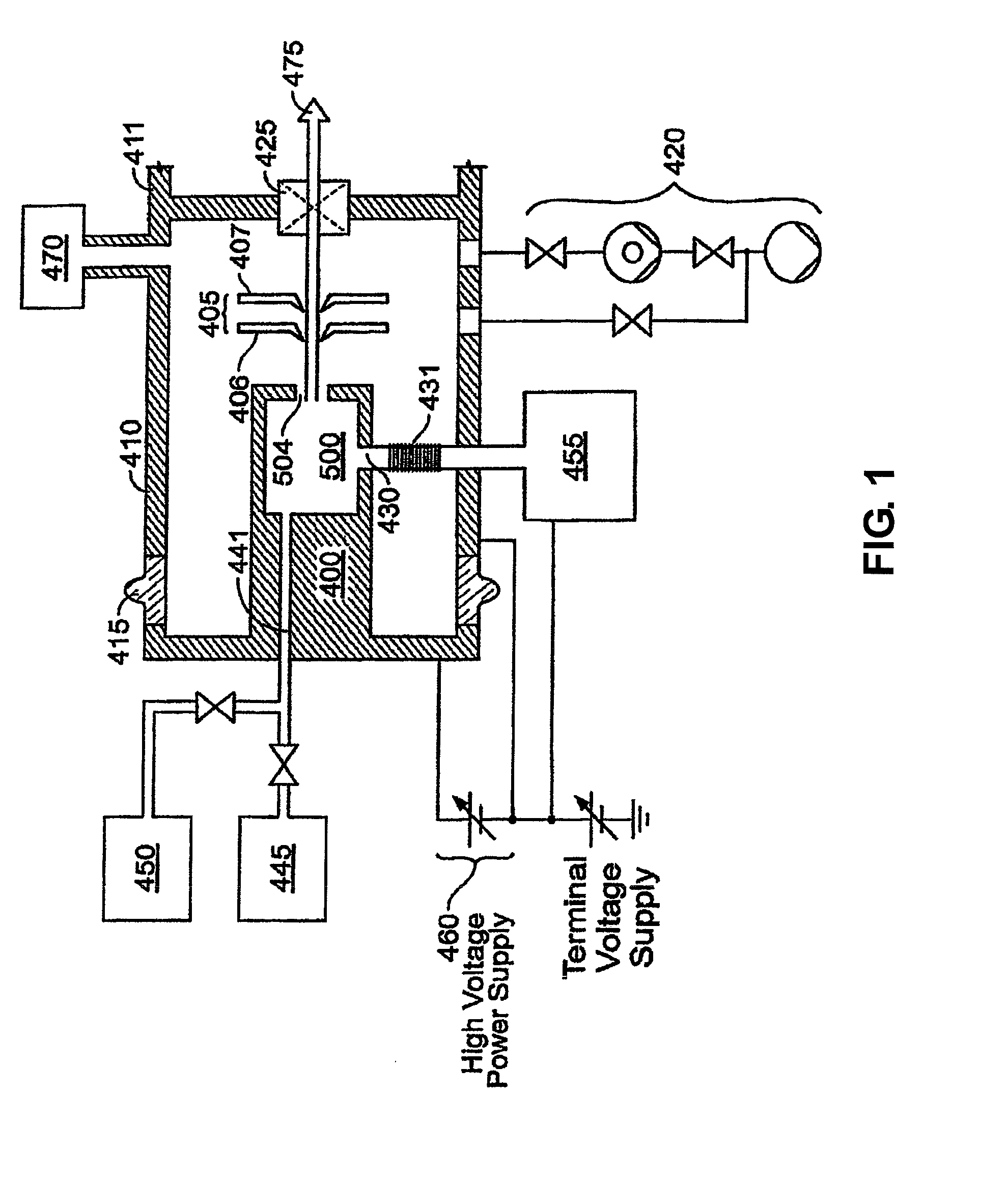Method and apparatus for extending equipment uptime in ion implantation
a technology of ion implantation and equipment, which is applied in the field of in situ cleaning system, can solve the problems of increasing affecting the precise qualities of the ion beam, and forming particles that are deleterious to the device yield, and reducing the effective reaction rate. , the effect of reducing the pressure in the chamber to be cleaned
- Summary
- Abstract
- Description
- Claims
- Application Information
AI Technical Summary
Benefits of technology
Problems solved by technology
Method used
Image
Examples
Embodiment Construction
[0049]The present invention relates to a cleaning system, for example, an in situ cleaning system for use with semiconductor processing equipment. In accordance with an important aspect of the invention, the cleaning system provides for dynamic cleaning of the semiconductor processing system by varying the pressure of the cleaning gas over time to create pressure gradients during a cleaning cycle. In particular, in a preferred embodiment the pressure of the cleaning gas is increased to a maximum pressure PMAX to fill the chamber to be cleaned with the cleaning gas. The maximum pressure PMAX is maintained for a dwell time selected to allow the available reactants to generate the desired end products. The pressure in the chamber to be cleaned is then reduced to create pressure gradients to cause the cleaning gas to reach areas which did not get sufficient gas or were not impinged by the cleaning gas and to permit venting of the reaction products. As such, each time the chamber to be f...
PUM
| Property | Measurement | Unit |
|---|---|---|
| vapor pressure | aaaaa | aaaaa |
| voltage | aaaaa | aaaaa |
| surface area | aaaaa | aaaaa |
Abstract
Description
Claims
Application Information
 Login to View More
Login to View More - R&D
- Intellectual Property
- Life Sciences
- Materials
- Tech Scout
- Unparalleled Data Quality
- Higher Quality Content
- 60% Fewer Hallucinations
Browse by: Latest US Patents, China's latest patents, Technical Efficacy Thesaurus, Application Domain, Technology Topic, Popular Technical Reports.
© 2025 PatSnap. All rights reserved.Legal|Privacy policy|Modern Slavery Act Transparency Statement|Sitemap|About US| Contact US: help@patsnap.com



